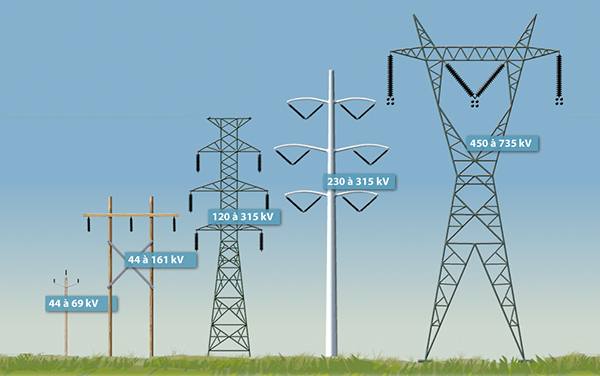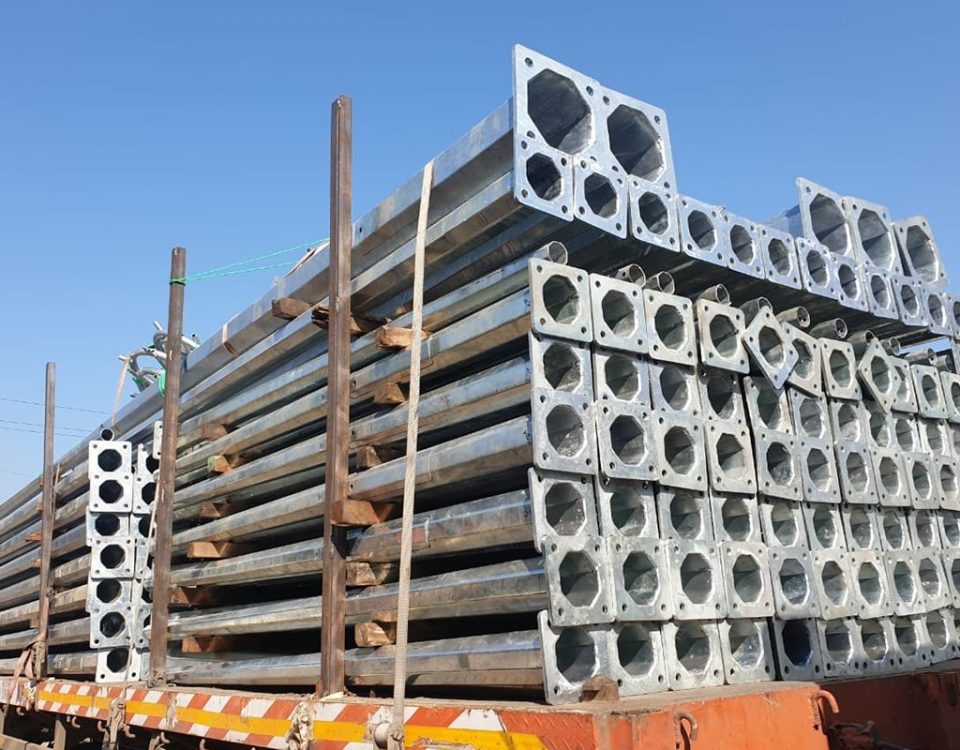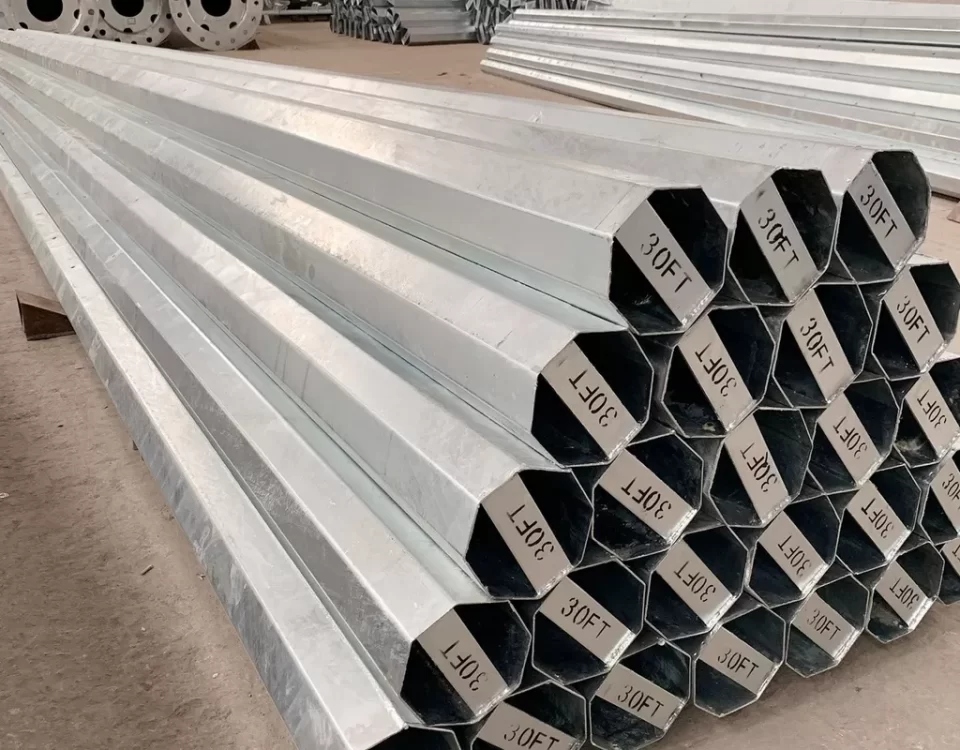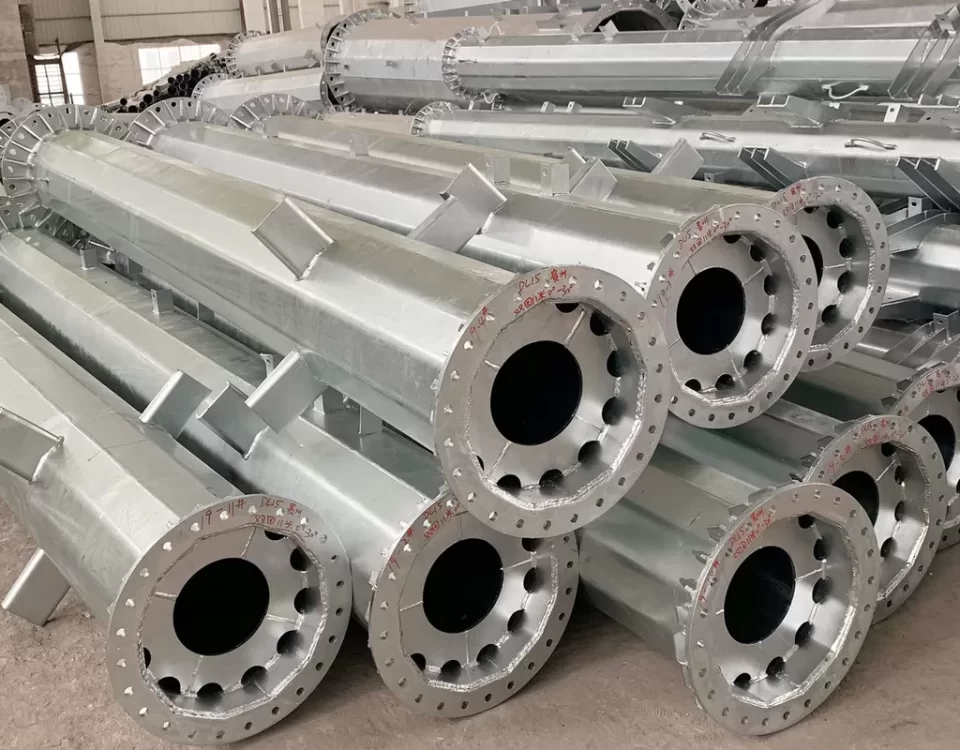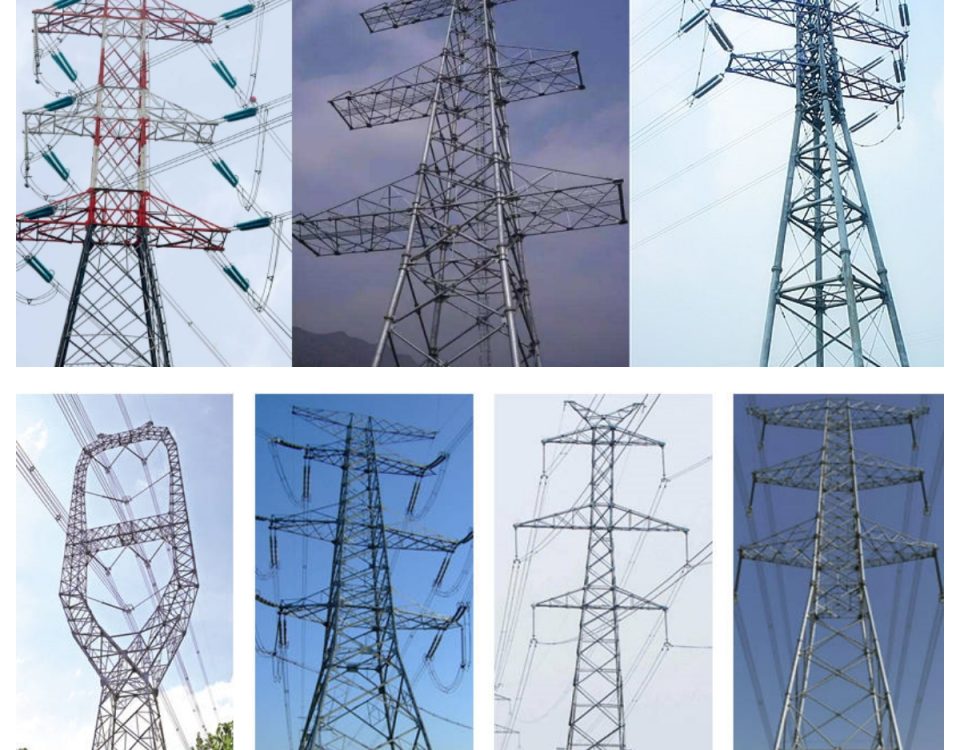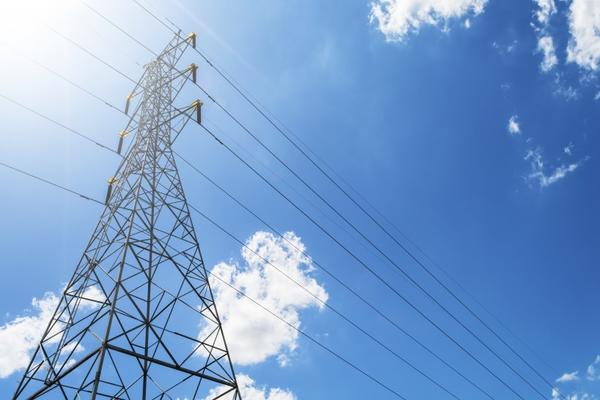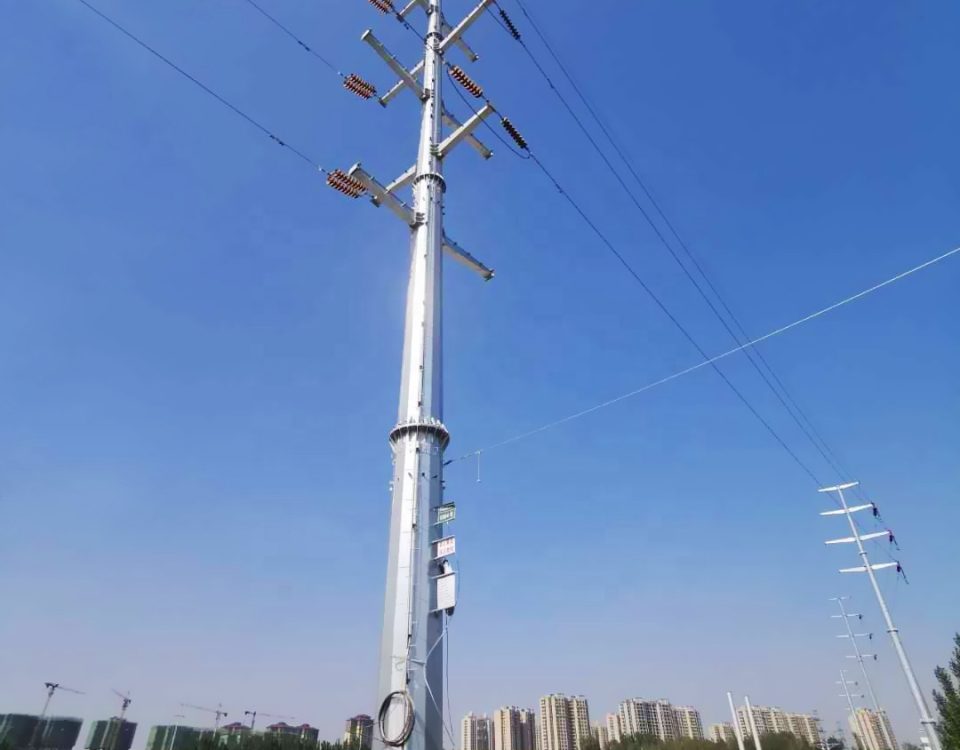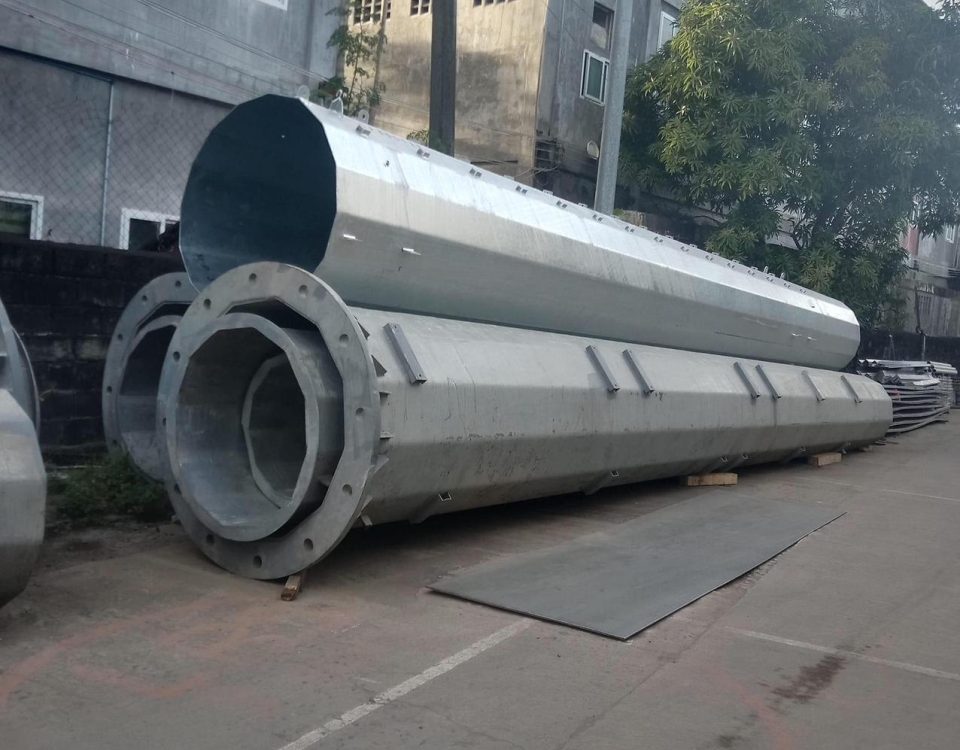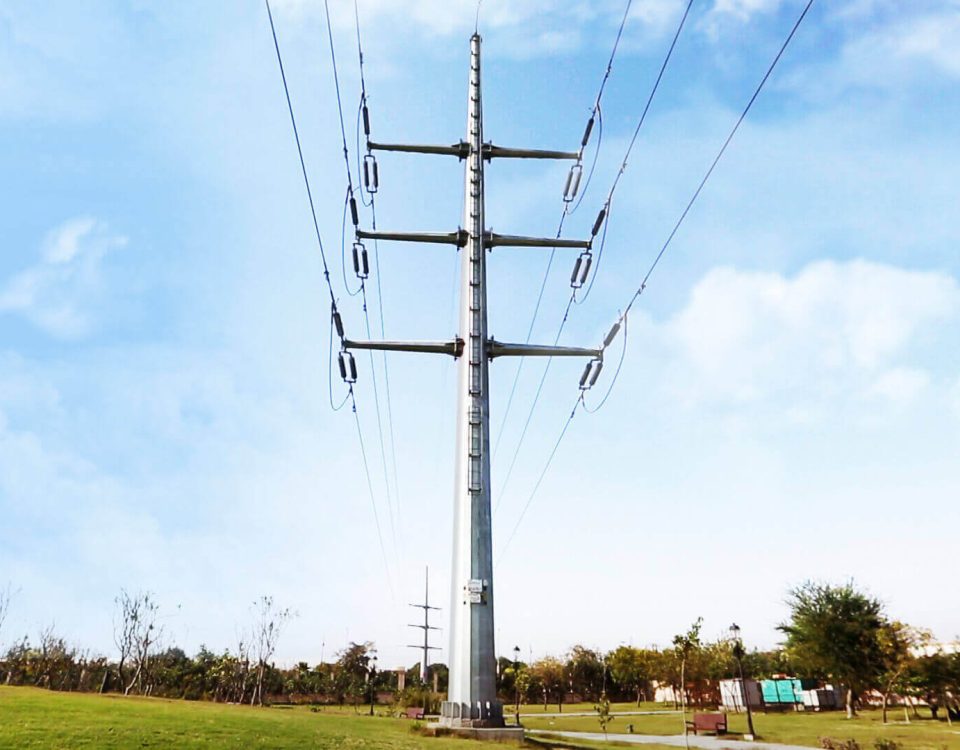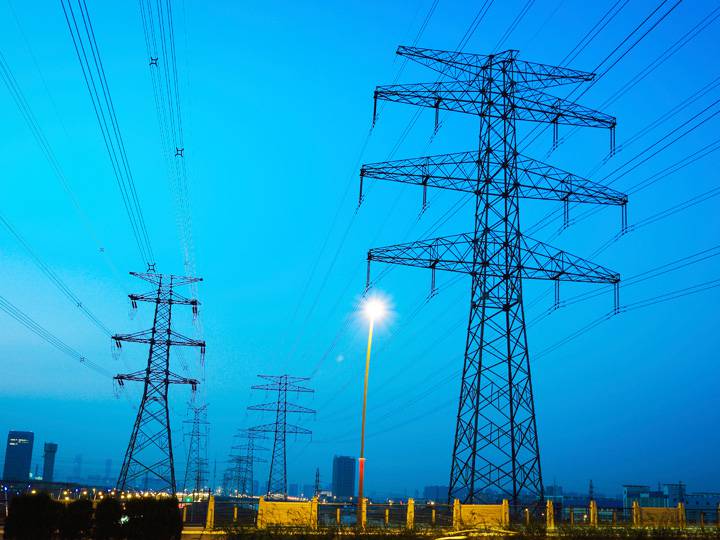
electric power transmission and distribution tower
June 27, 2018
Hight Voltage Steel Tower Construction
June 27, 2018differences between Transmission tower lines and distribution tower lines
Transmission tower lines and distribution tower lines are the two types tower for the transportation of electricity.
Transmission tower lines is a pair of electrical conductors carrying an electrical signal from one place to another. Coaxial cable and twisted pair cable are examples. The two conductors have inductance per unit length, which we can calculate from their size and shape. They have capacitance per unit length, which we can calculate from the dielectric constant of the insulation. In the early days of cable-making, there would be current leaking through the insulation, but in modern cables, such leakage is negligible. The electrical resistance of the conductors, however, is significant because it increases with frequency. The magnetic fields generated by high-frequency currents drive those currents to the outer edge of the conductor that carries them, so the higher the frequency, the thinner the layer of metal available to carry the current, and the higher the effective resistance of the cable. In this discussion, we derive and demonstrate the equations that govern the propagation of waves down a transmission line, and show how the frequency-dependent resistance of these cables gives rise to attenuation and distortion of high-frequency signals.
Distribution lines
Deliver electricity to neighborhoods and communities over a shorter distance than transmission lines
Are generally supported by wooden poles and not as high as transmission lines
Are the final stage of electricity delivery to homes and businesses
Carry lower voltage electricity that is still powerful enough to cause injury or death
Trees growing near these lines may be managed with directional pruning, but removal is often best. Tree height maximums are 25 feet or less at maturity.
| BASIS | TRANSMISSION LINE | DISTRIBUTION LINE |
|---|---|---|
| Usage | Transmission Line helps in the movement of electricity from power plant to the substations. | The Distribution line carries electricity from the substation to the consumer’s end. |
| Phase | It is carried out electricity in three phase supply system. | It requires a single phase supply system for carrying electricity. |
| Voltage level | Carries electricity at a very high voltage. About 11000 volts. | Carries electricity at a very low and safe level of about 220 volts. |
| Current conduction level | They conduct current at 69 kV or more. | They conduct less than 69 kV |
| Thickness | Transmission lines are thick lines. | Distribution line are thin as compared to the transmission line. |
Related posts
In low-voltage transmission networks, which typically operate below 1,000 volts, galvanized steel poles provide a durable and environmentally friendly solution. This article explores the features, benefits, applications, and technical specifications of low voltage galvanized steel utility poles in transmission line projects.
Hot Dip Galvanized Electrical Metal Utility Steel Pole for Railway in Shape Octagonal widely used in electrical power transmission railway station industry. In order to meet the increasingly higher demand for steel poles, our company design and produce many kinds of steel poles for the power transmission and distribution system. Besides, our electrical steel poles have been tested and approved by the Transmission Pole Tower Testing Station.

